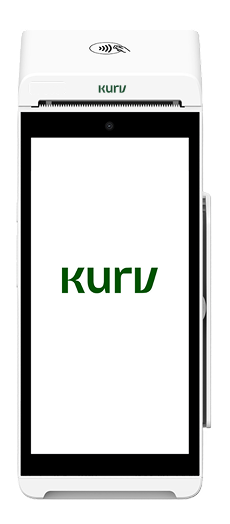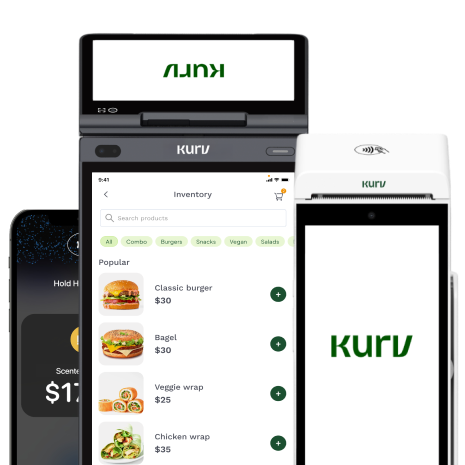New identity theft scams rear their ugly heads each year. Many are brought to the forefront during tax season, when we use our personal information to file annual taxes. If you’ve been filing for a while, you may already be aware of the threat identity theft poses, and you may already know how to identify a scam.
Key Takeaways:
- The first step in preventing identity theft from affecting your business involves identifying the telltale signs of a scam. Be on the lookout and stay vigilant.
- One of the most foolproof ways to identify a data breach or identity theft scam is to create, implement, and maintain a data security plan.
- Provide your employees with basic data security information and a list of best practices to help protect all involved.
- The IRS advises all businesses with an Employer Identification Number (EIN) to keep the number safe and the application up-to-date to ensure accuracy.
However, fraudsters don’t just target individuals. They also victimize businesses they see as vulnerable, particularly small businesses.
If you’re a small business owner, you must be able to detect the signs of a scam. More than that, you should feel fully equipped to protect your professional livelihood.
In this post, we’ll share information to help you recognize a potential scam and some steps you can take to prevent expensive data loss.
What is Identity Theft and Who is a Target?
Identity (ID) theft occurs when someone steals personal information to commit fraud. That fraud can take many forms. For example, an identity thief may use personal information to fraudulently apply for credit, file taxes, or get medical services.
Here are three common types of ID theft:
- Tax ID Theft: This occurs when a thief uses your Social Security number to falsely file federal or state tax returns.
- Medical ID Theft: This occurs when a thief steals your Medicare ID or health insurance member number. They may use this information to get medical services or send fake bills to your health insurer.
- Social ID Theft: This occurs when someone uses your name and photos to create a fake account on social media.
Any person or business could be a potential target for identity theft. According to USA.gov, children and seniors tend to be the most vulnerable [1] USA.gov. “Identity Theft” Accessed on August 12th, 2025 .
Child ID theft can go undetected for many years, which means victims may not know their identity has been stolen until they try to apply for a loan as an adult.
- Senior citizens are particularly vulnerable to identity theft due to the sharing of personal information with assorted caregivers and healthcare providers. In casting a wide net, this sensitive data risks being exposed.
As we mentioned at the beginning of this post, small businesses are often targets for identity thieves. Let’s look at how your small business might be at risk.
Did you know…
Identity theft can critically damage a merchant’s credit status and force them to spend an inordinate amount of time and money to restore their identity.
How Your Business May be Vulnerable
As a small business owner, you may think identity thieves wouldn’t be interested in your business. After all, you’re not a giant corporation with all your business and financial information out in the open for the world to see. This is a dangerous mindset, as identity thieves can breach your safety protocols no matter the size of your operation.
While you may have fewer accounts and less capital than a big business, you’re still handling the same types of information. However, because you are a smaller operation, you will likely have fewer security measures in place to protect this information than a large corporation may have. This makes your business much easier to attack, putting you at a high risk for identity theft.
Here are some examples to explain how your small business [2] Lifelock. “Is Your Small Business a Big Target for Identity Thieves?” Accessed on August 12th, 2025 could be affected:
- Let’s say a criminal obtains your business’s identity information. They could then decide to hijack that information and acquire credit under your business name. You may not know this has happened until huge bills start filling your mailbox or clogging your email. In this scenario, a substantial amount of damage can be done in a limited timeframe.
- Does your business collect personally identifiable information (PII), such as Social Security numbers, account numbers, or birthdays? You are required by law to protect that information[3] GSA, U.S. General Services Administration. “Rules and Policies – Protecting PII – Privacy Act” Accessed on August 12th, 2025 . If a criminal were to steal that customer or client information, it would affect much more than your credit or reputation. You could face multiple lawsuits, fines, and even lose your business entirely over the data breach.
Although all this information is intimidating, the underlying message is clear: You do not want to be trapped in an identity theft scam or data breach. Keep reading for some steps you can take to prevent these things from happening.
Recognizing and Preventing Identity Theft
Identity theft is a serious threat to businesses everywhere. The first step in preventing identity theft from affecting your business is to know the signs of a scam—according to the IRS [4] IRS. “Identity theft information for businesses” Accessed on August 12th, 2025 , here are some common signs.
Be alert to possible business identity theft if:
- You can’t e-file a return because one was already filed with the same EIN or SSN.
- You get a rejection notice for a routine extension to file request because a return with a duplicate EIN or SSN is already on file.
- You receive an unexpected tax transcript or IRS notice that doesn’t match anything submitted.
- You receive a Letter 6042C or 5263C from the IRS.
- You don’t receive expected or routine correspondence from the IRS because the business address has been changed.
To prevent an attack on your business, safeguard your systems and data with the strongest possible measures. When creating or updating a security plan for your business, remember these four points.
Following Basic Security Steps
Some security best practices to follow include:
- Installing anti-malware/anti-virus security software with automatic updates on all business laptops, desktops, routers, tablets, and phones.
- Deploying firewall protections on your network.
- Employing multi-factor authentication when available.
- Using responsible passwords that consist of at least eight characters, including numbers, capital and lowercase letters, and special characters.
Stick to a Data Security Plan
One of the best ways to prevent a data breach or identity theft scam is to create and maintain a data security plan. If you have the resources, contacting a cybersecurity consultant to help you build your plan may be worth your time.
Here are a few free resources to help you get started on your own:
| Safeguarding Taxpayer Data | Start With Security: A Guide for Business | Small Business Information Security: The Fundamentals |
|---|---|---|
| The IRS | The Federal Trade Commission | The National Institute of Standards and Technology |
Educate Employees
Providing employees with basic data security information and best practices can help protect everyone involved. Be sure to take the time to share these best practices with new employees and give current employees frequent reminders or refreshers. Here are some points to discuss:
- Beware of phishing emails, the most common tactic used to steal data.
- Do not respond to suspicious or unknown emails. If the email is IRS-related, forward it to [email protected].
- Never open or download attachments from unknown senders, even potential clients. Verify the email is authentic by calling the sender.
- Only email documents that are password-protected and encrypted.
- Use separate personal and business email accounts.
- Protect your email accounts with strong passwords and two-factor authentication, if available.
Keep EINs Current and Secure
The IRS advises all businesses with an Employer Identification Number (EIN) to keep the number safe and the application up-to-date with accurate, responsible party and contact information. Business owners can update their EIN via the IRS site.
Identity thieves are out there, waiting hungrily for the opportunity to steal your money. Don’t give them that chance! As tax season approaches, take the necessary steps to protect your business, your employees, and yourself.
If you suspect your business has been a victim of identity theft or data loss, report it to the IRS immediately. Be sure to read up on the ins and outs of identity theft and how you can best protect yourself [5] IRS. “Identity theft information for businesses” Accessed on August 12th, 2025 .




























